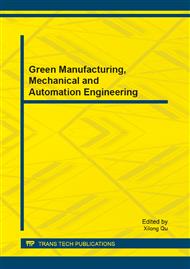p.208
p.213
p.218
p.222
p.226
p.230
p.235
p.240
p.245
Two Basic Issues in the Development of Oil-Field Visualization
Abstract:
It can be seen from the analysis of two issues, which we have met during the research on visualization of oil-field development, that it is difficult to deal with the division of flowing units in reservoirs with various methods, such as index method of zone of flow, sedimentalogical method. And logging data is just the reflection for the information of reservoirs. However we can effectively improve the accuracy degree of division of flowing units with the method of fundamental interpretation units in the logging data interpretation. This essay points out five directions of the study on the regular patter of remaining oil distribution and make it sure that only by combining statistic and dynamic method can we confirm how the remaining oil distribute and know how to make it quantified.
Info:
Periodical:
Pages:
226-229
Citation:
Online since:
July 2013
Authors:
Price:
Сopyright:
© 2013 Trans Tech Publications Ltd. All Rights Reserved
Share:
Citation:


